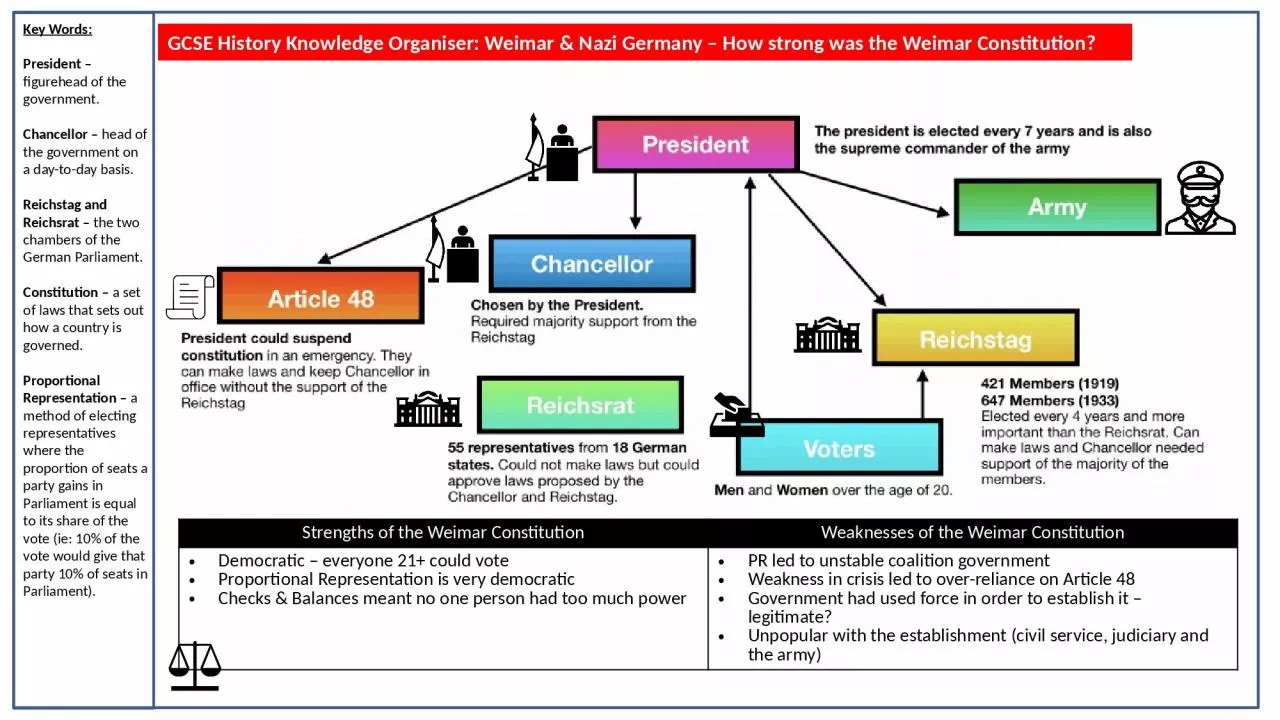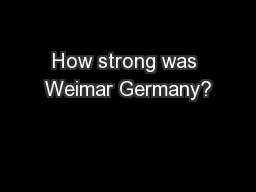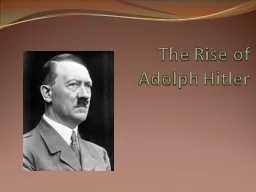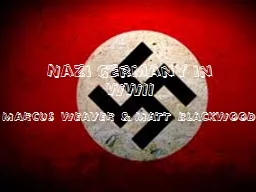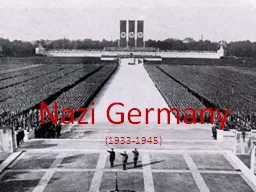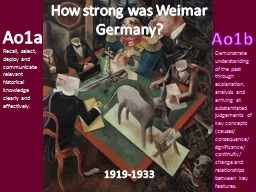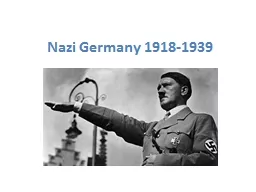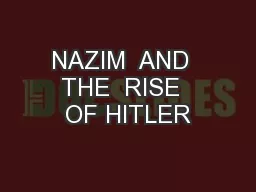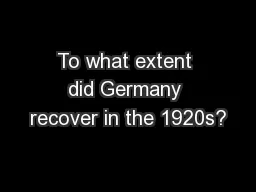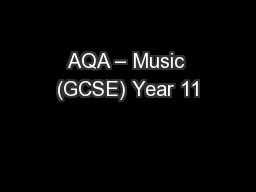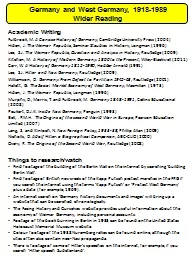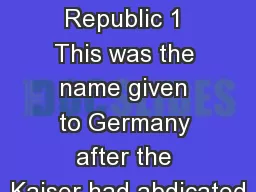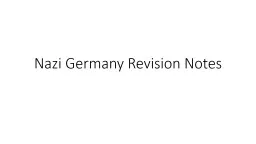PPT-GCSE History Knowledge Organiser: Weimar & Nazi Germany – How strong was the Weimar
Author : della | Published Date : 2023-09-19
Key Words President figurehead of the government Chancellor head of the government on a daytoday basis Reichstag and Reichsrat the two chambers of the German
Presentation Embed Code
Download Presentation
Download Presentation The PPT/PDF document "GCSE History Knowledge Organiser: Weimar..." is the property of its rightful owner. Permission is granted to download and print the materials on this website for personal, non-commercial use only, and to display it on your personal computer provided you do not modify the materials and that you retain all copyright notices contained in the materials. By downloading content from our website, you accept the terms of this agreement.
GCSE History Knowledge Organiser: Weimar & Nazi Germany – How strong was the Weimar: Transcript
Download Rules Of Document
"GCSE History Knowledge Organiser: Weimar & Nazi Germany – How strong was the Weimar"The content belongs to its owner. You may download and print it for personal use, without modification, and keep all copyright notices. By downloading, you agree to these terms.
Related Documents

